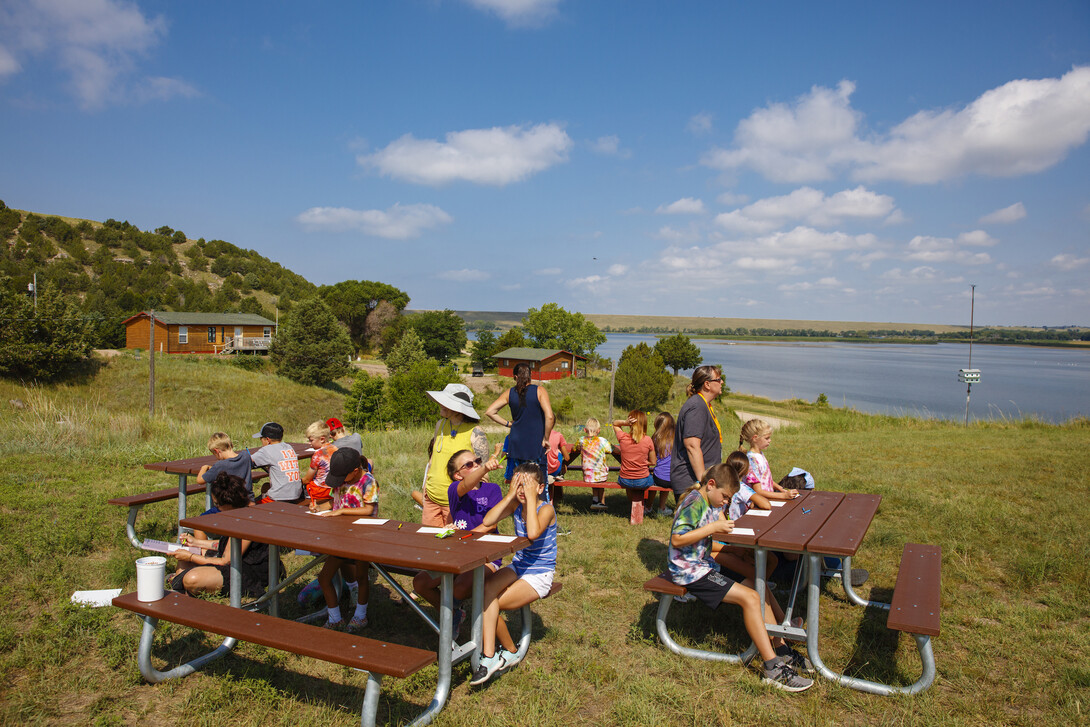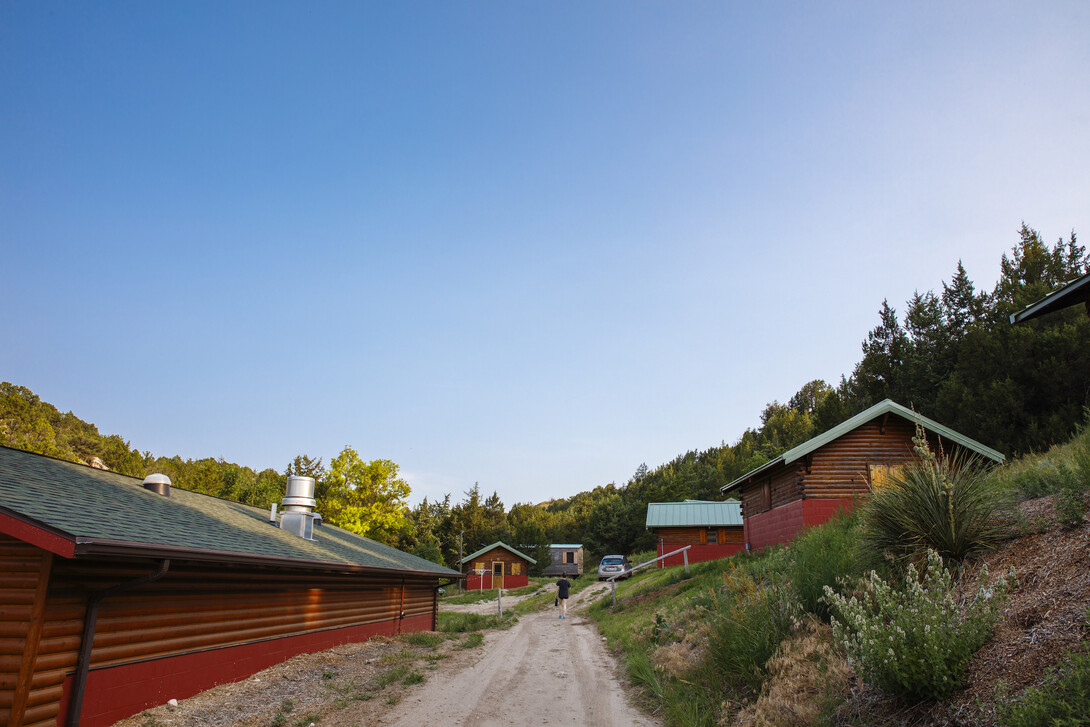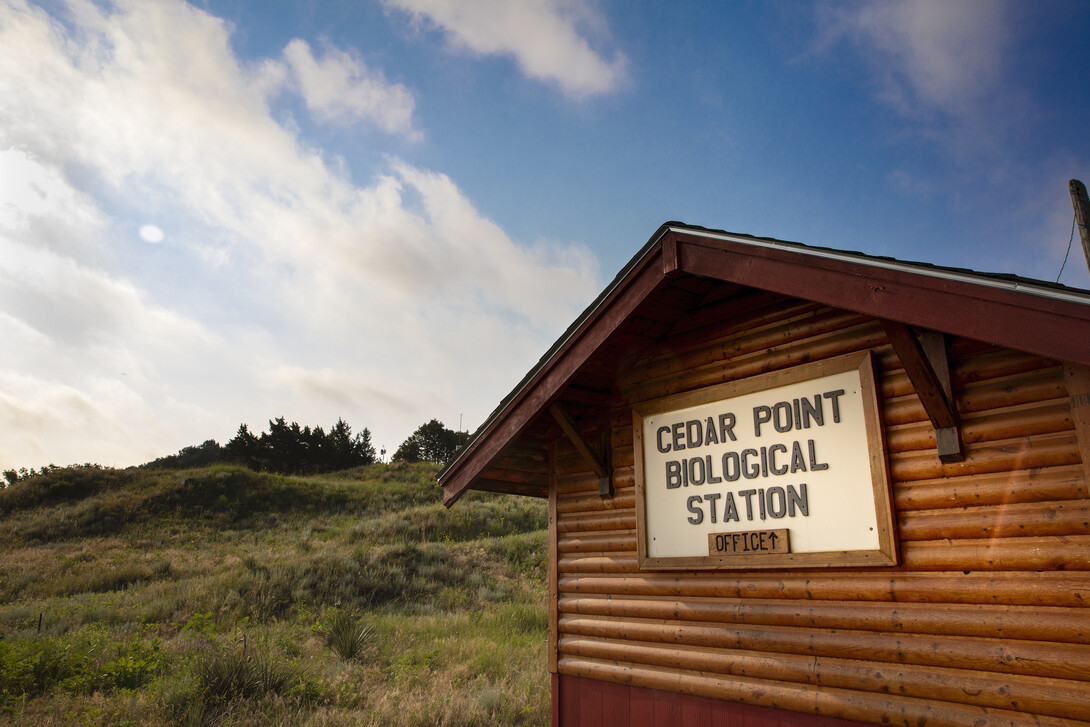
Editor’s Note — Nebraska Today’s Annie Albin spent five days at the University of Nebraska–Lincoln’s Cedar Point Biological Station to highlight the studies and work of students, faculty and staff at the station. This is the first in a series of stories about Cedar Point.
Cedar Point Biological Station’s classrooms look a little different.
This summer, Huskers have scattered into the surrounding Sandhills to search for snakes for their herpetology courses, dived into the waters of Lake Ogallala with scuba gear to practice crime scene investigations, painted watercolors of the scenic views encompassing them, and prepared food and lodging plans for the station’s steady stream of visitors.
From academic revelations to developing foundational career skills and interpersonal relationships, Cedar Point has provided University of Nebraska–Lincoln students with a uniquely Nebraskan educational experience for nearly 50 years. The station was first built in 1960 as Cedar Point Ranch Girl Scout Camp. It was purchased by the School of Biological Sciences in 1975, after the unit had leased it for several years. The cabins that once housed a Girl Scout camp now consist of professors, students and staff who shuttle back and forth between labs, lectures and faculty-led hikes through the hills.

Located in Ogallala, near Lake McConaughey, the field station is comprised of 900 acres and includes a small campus with housing, dining facilities, classrooms and labs. With access to prairie, redcedar canyons, the North Platte River valley and the Sandhills, the station offers a multitude of courses and internship opportunities designed to help students learn in a natural environment. Eight to 10 classes are offered over four sessions each summer, from approximately May 1 to Aug. 15. In the off-season, research can continue for small groups.
“We are built around the idea of promoting field-based education and research,” said Jon Garbisch, associate director of Cedar Point. “Here, three-quarters of the class should be outside with exercises that involve measuring real things.”
Courses at the station range from the arts and anthropology to biology, with new offerings each year. This summer, Bill Belcher, assistant professor in anthropology and expert in forensic anthropology, held an inaugural underwater forensic investigation field school at Cedar Point, where students learned how to do forensic investigation in underwater environments. Other classes offered included Avian Biology and Predator Ecology, and a Nebraska Master Naturalist Certification for Teachers.

But Cedar Point isn’t limited to courses. There are work opportunities, too. Fine and performing arts students lead summer camps for local K-12 students, and hospitality, restaurant and tourism management and nutrition science majors manage the cabins and thrice-daily kitchen meals.
Meanwhile, faculty have used the space to teach classes, take writing retreats and facilitate their research.
The Cedar Point learning environment invites students to take a holistic approach to their academics. At the station, they are able to focus on their class and their Cedar Point community for the two or three weeks of their session while disconnected from the bustle of Lincoln’s campuses. This experience creates stronger connections to the curriculum, but also to one another.
“Experiential learning — it works well. People know it,” Garbisch said. “And we have 50 years of it.”








